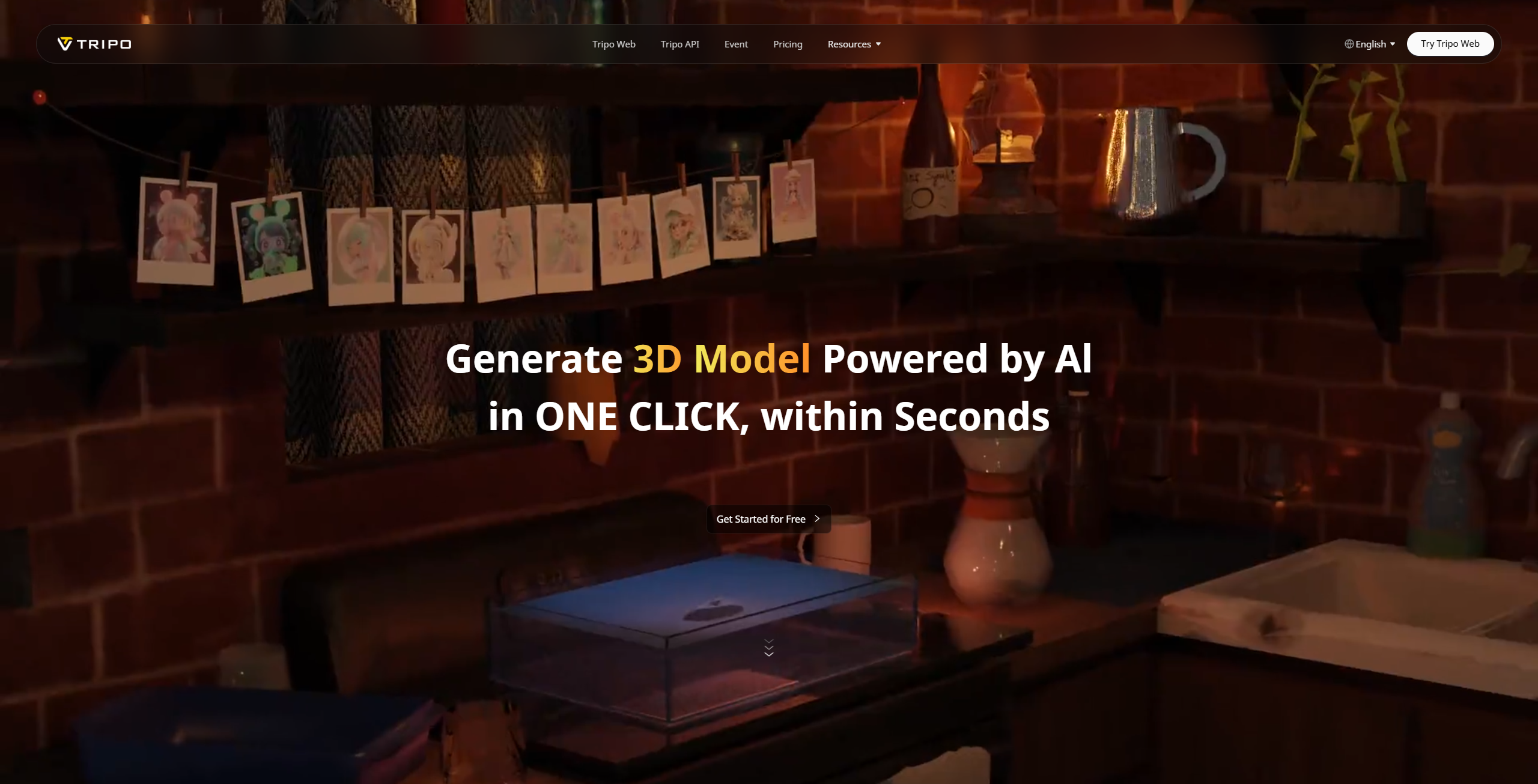- Home
- AI 3D Model Generator
- Tripo AI

Tripo AI
Open Website-
Tool Introduction:AI turns images or text into 3D models with high-res textures, fast.
-
Inclusion Date:Oct 21, 2025
-
Social Media & Email:
Tool Information
What is Tripo AI
Tripo AI is an AI-powered 3D model generator that turns natural language prompts and reference images into detailed 3D assets with high-resolution textures. It streamlines 3D content creation for pros and beginners alike, enabling rapid concepting, prototyping, and asset generation for game development, 3D printing, AR/VR, and metaverse experiences. With quick turnaround and an intuitive workflow, Tripo AI reduces manual modeling time while preserving creative control, making high-quality 3D accessible across teams and pipelines.
Tripo AI Main Features
- Text-to-3D generation: Convert concise or detailed prompts into complete 3D models, ideal for fast ideation and concept art.
- Image-to-3D from references: Turn product photos or sketches into 3D meshes to accelerate modeling and visualization.
- High-resolution textures: Automatically synthesize detailed textures that enhance realism and reduce time spent on material work.
- Iterative refinement: Adjust prompts or inputs and regenerate to improve geometry, texture fidelity, and style consistency.
- Fast turnaround: Produce usable assets in minutes, shortening iteration cycles in game and XR pipelines.
- Workflow-friendly output: Export models for use in common DCC tools, game engines, and 3D printing workflows.
Who Should Use Tripo AI
Tripo AI suits 3D artists, game designers, indie developers, product designers, XR creators, marketers, educators, and hobbyists. it's valuable for teams needing quick prototypes, background props, concept assets, or visualizations for AR/VR demos, metaverse environments, and 3D printing projects without a steep modeling learning curve.
How to Use Tripo AI
- Start a new project and choose a mode: text-to-3D or image-to-3D.
- Enter a clear prompt or upload reference images that capture shape, style, and key details.
- Optionally set generation preferences such as desired detail level or texture emphasis.
- Run the generation to create an initial 3D model with textures.
- Preview in the 3D viewer, rotate, zoom, and inspect geometry and surface detail.
- Refine by editing the prompt or inputs and regenerate to improve results.
- Export the model and integrate it into your preferred tools, engines, or 3D printing workflow.
Tripo AI Industry Use Cases
Gaming: Rapidly prototype props, environment assets, or hero objects for blockouts and vertical slices.
Product visualization: Turn concept sketches into textured 3D mockups for reviews and marketing visuals.
AR/VR and metaverse: Generate scene elements and stylized assets for immersive experiences and social worlds.
Education: Teach 3D fundamentals by iterating on generated models and exploring topology and texturing.
3D printing: Create printable figurines or prototypes, with optional post-processing for print readiness.
Tripo AI Pricing
For current plan details, limits, and any free trial availability, please refer to the official Tripo AI website. Review terms and usage allowances to match your production needs.
Tripo AI Pros and Cons
Pros:
- Generates 3D assets from text and images, reducing manual modeling time.
- High-resolution textures improve visual quality out of the box.
- Speeds up prototyping and iteration for games, AR/VR, and metaverse content.
- Accessible for beginners while supporting professional workflows.
- Iterative refinement enables creative control over outcomes.
Cons:
- Quality can vary; complex shapes may require manual cleanup or retopology.
- Less granular control than traditional modeling for precision-critical assets.
- Exported models may need optimization for performance or printability.
- Using third-party reference images may raise licensing or IP concerns.
Tripo AI FAQs
-
Does Tripo AI support both text-to-3D and image-to-3D?
Yes. You can generate 3D models from natural language prompts or from reference images to capture shape and style.
-
Are the generated textures high resolution?
Tripo AI produces high-resolution textures designed to enhance realism and reduce manual texturing effort.
-
Is it suitable for beginners?
Yes. Its guided workflow lowers the barrier to entry while still offering iteration for experienced artists.
-
Can I use the models in game engines or for 3D printing?
Models can be exported for common pipelines. Depending on the use case, you may need optimization or cleanup before deployment or printing.


